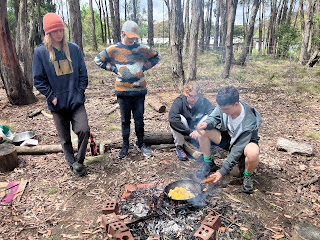Kitchen Garden Blog #8: nets and compost
We've been working hard to create great soil for growing in. One of our methods has been creating huegel culture beds (detailed in a previous blog post - #3). This involves using wood as a base layer for the beds where they invite fungi into the beds to break them down, providing the soil with nutrients and water retaining properties for years to come. In order to get enough wood for the task, we formed a human chain from the wood pile to the car boot. Then at the beds we did similar, from the car boot to the garden beds. It worked pretty well.
We've also been working on our composting systems at the school. All organic waste now goes into wheelie bins which can be taken over to the house and composted. We've set up a (currently) two bay pallet compost system, as well as our conventional bin, a worm farm and, since autumn, a caged leaf mulch pile.
We've also done some composting in situ. This is a great option if you have limited space. Compost straight into your beds. Dig a hole or a trench, bury your kitchen scraps and let the worms and soil microbiology do the rest. We did this on a fairly large scale in a number of beds, digging trenches, piling in food scraps, horse manure and straw and then topping with some of Macedon Ranges Shire Council's finest fogo compost.
Since we've started planting out our beds, the kangaroos have started taking an interest, so we had to go into protection mode. We've been constructing some simple hoop frames to support nets to keep our young seedlings safe from our hungry macropodine neighbours.
Cheers and happy gardening,
John & The Kitchen Garden Crew











Comments
Post a Comment